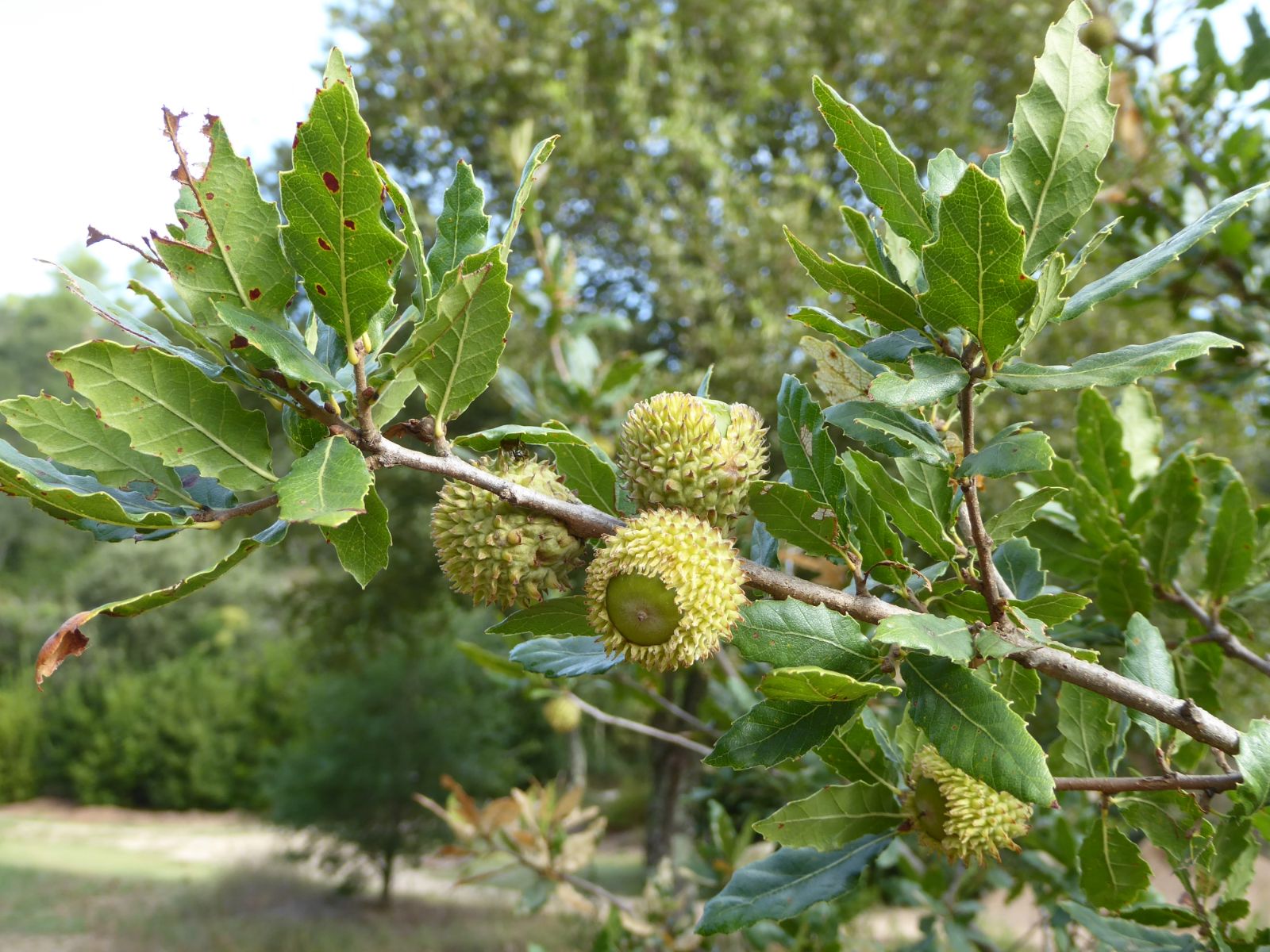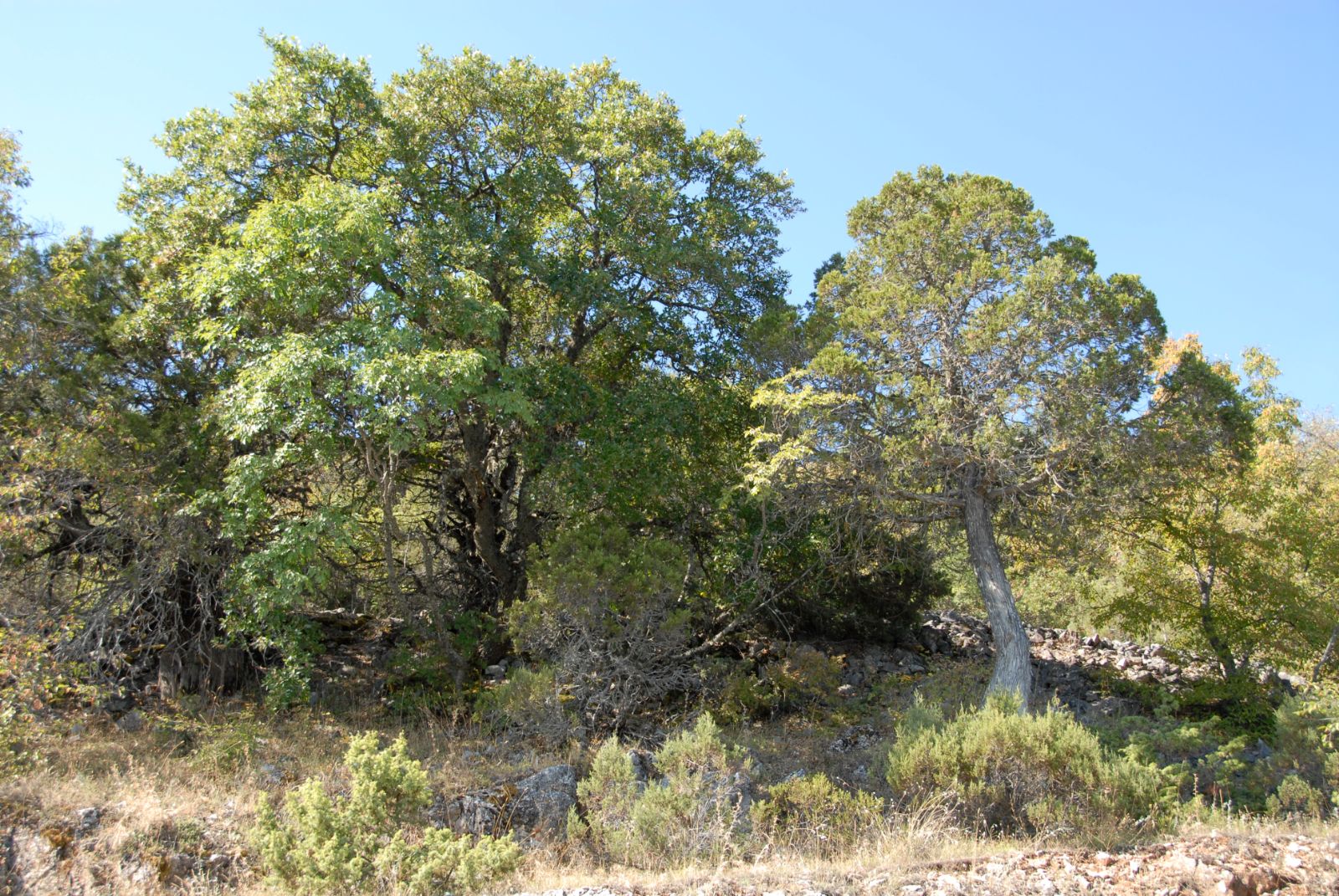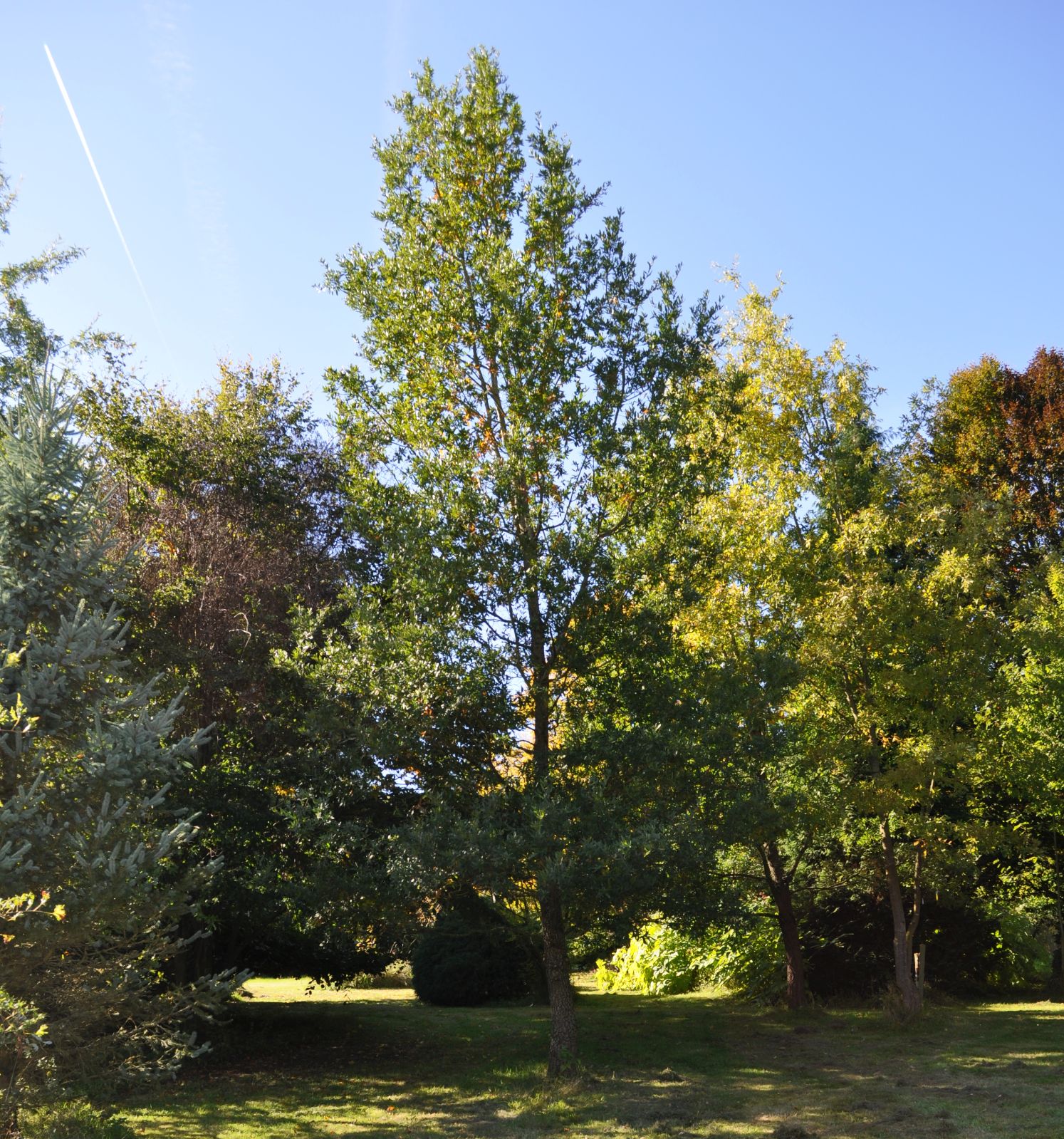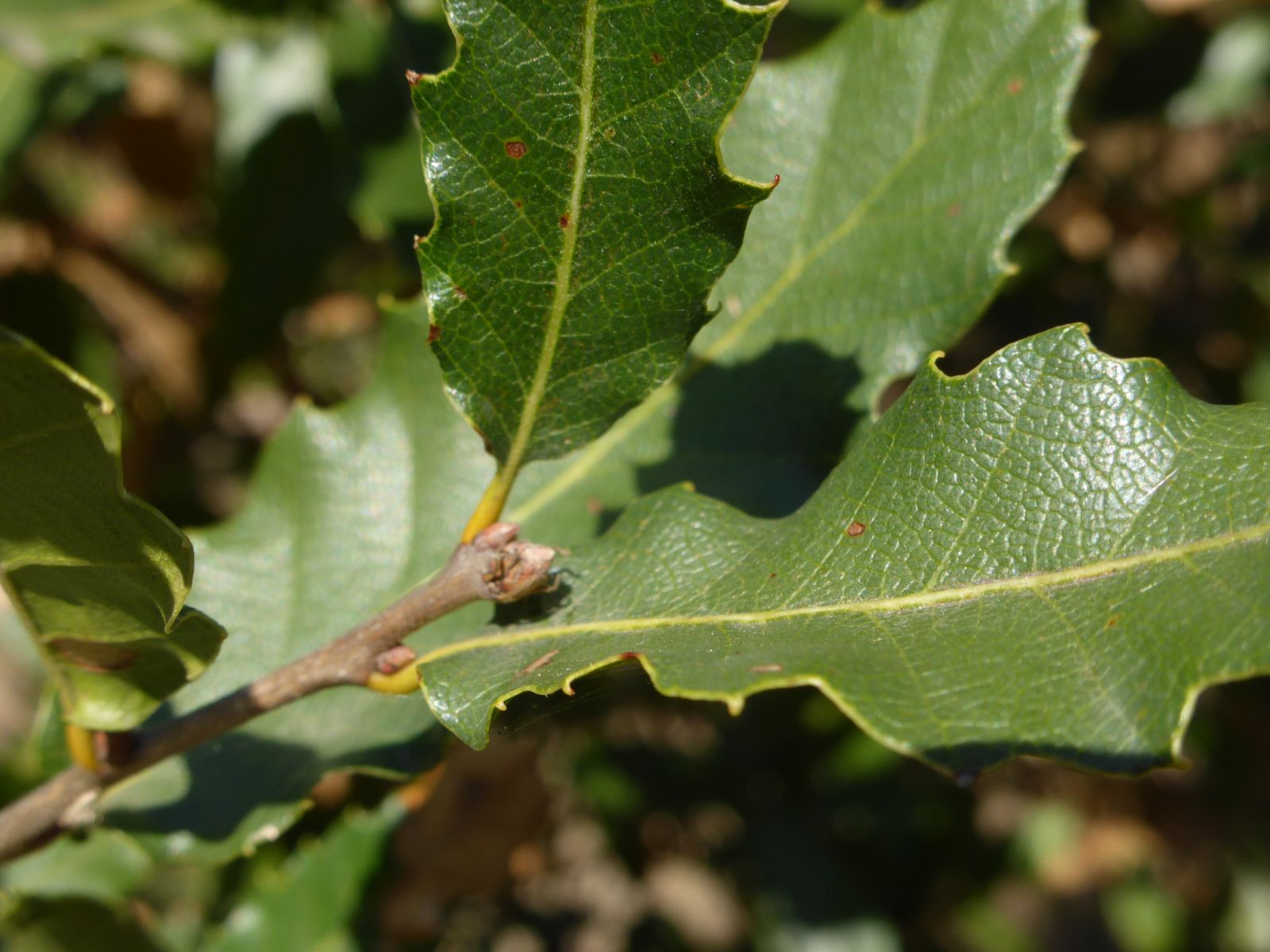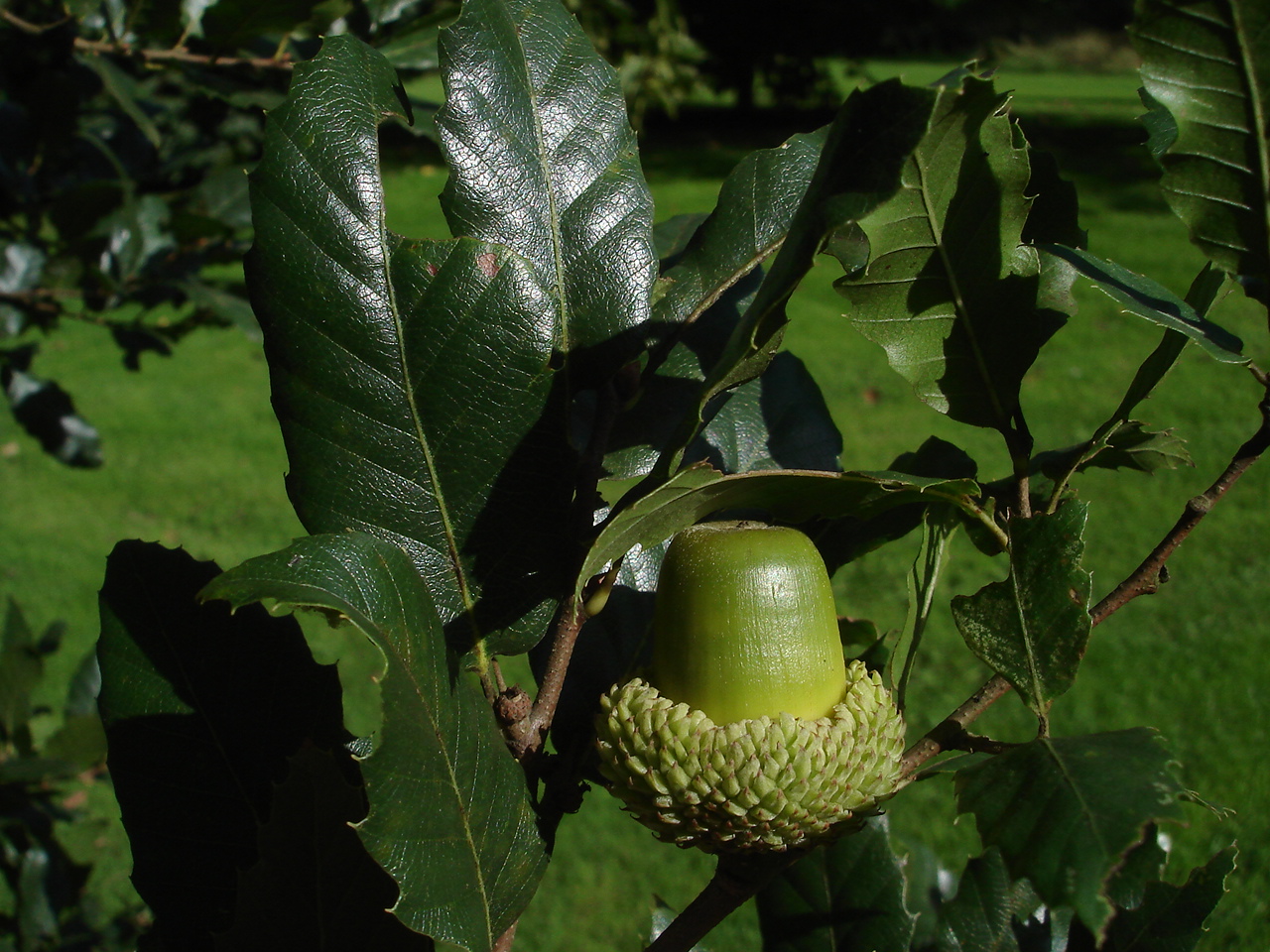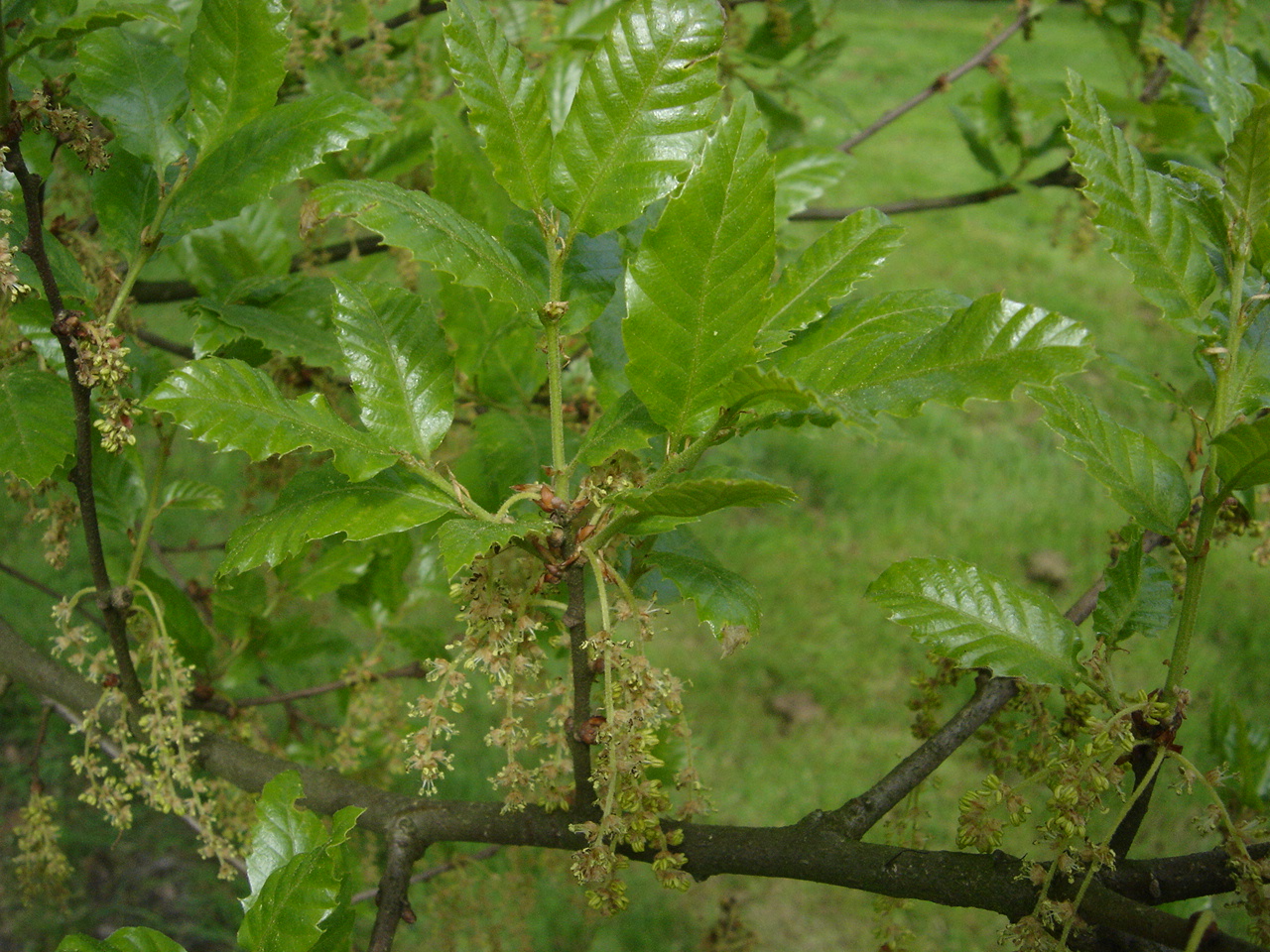Quercus trojana
Sponsor
Kindly sponsored by
The Trees and Shrubs Online Oak Consortium
Credits
Allen Coombes & Roderick Cameron
Recommended citation
Coombes, A. & Cameron, R., 'Quercus trojana' from the website Trees and Shrubs Online (treesandshrubsonline.
Genus
- Quercus
- Subgen. Cerris, Sect. Cerris
Common Names
- Macedonian Oak
- Trojan Oak
- Fragno
Synonyms
- Quercus macedonica A. DC.
- Quercus grisebachii Kotschy
Infraspecifics
Other taxa in genus
- Quercus acerifolia
- Quercus acherdophylla
- Quercus acrodonta
- Quercus acuta
- Quercus acutifolia
- Quercus acutissima
- Quercus afares
- Quercus affinis
- Quercus agrifolia
- Quercus alba
- Quercus aliena
- Quercus alnifolia
- Quercus aquifolioides
- Quercus arizonica
- Quercus arkansana
- Quercus aucheri
- Quercus augustini
- Quercus austrina
- Quercus × auzendei
- Quercus baloot
- Quercus bambusifolia
- Quercus baronii
- Quercus bicolor
- Quercus brantii
- Quercus buckleyi
- Quercus canariensis
- Quercus canbyi
- Quercus candicans
- Quercus castanea
- Quercus castaneifolia
- Quercus cerris
- Quercus chenii
- Quercus chrysolepis
- Quercus coccifera
- Quercus cocciferoides
- Quercus coccinea
- Quercus conspersa
- Quercus crassifolia
- Quercus crassipes
- Quercus delavayi
- Quercus dentata
- Quercus deserticola
- Quercus dolicholepis
- Quercus douglasii
- Quercus dumosa
- Quercus durifolia
- Quercus eduardii
- Quercus ellipsoidalis
- Quercus emoryi
- Quercus engelmannii
- Quercus engleriana
- Quercus euboica
- Quercus eugeniifolia
- Quercus fabri
- Quercus faginea
- Quercus falcata
- Quercus floribunda
- Quercus frainetto
- Quercus franchetii
- Quercus fruticosa
- Quercus fusiformis
- Quercus gambelii
- Quercus garryana
- Quercus geminata
- Quercus georgiana
- Quercus germana
- Quercus gilliana
- Quercus gilva
- Quercus glabrescens
- Quercus glauca
- Quercus graciliformis
- Quercus gravesii
- Quercus griffithii
- Quercus grisea
- Quercus guyavifolia
- Quercus hartwissiana
- Quercus hemisphaerica
- Quercus × hispanica
- Quercus hondae
- Quercus hypargyrea
- Quercus hypoleucoides
- Quercus ilex
- Quercus ilicifolia
- Quercus imbricaria
- Quercus incana
- Quercus infectoria
- Quercus insignis
- Quercus ithaburensis
- Quercus kelloggii
- Quercus × kewensis
- Quercus kiukiangensis
- Quercus laceyi
- Quercus laevis
- Quercus lamellosa
- Quercus lanata
- Quercus lancifolia
- Quercus laurifolia
- Quercus laurina
- Quercus × leana
- Quercus leucotrichophora
- Quercus × libanerris
- Quercus libani
- Quercus lobata
- Quercus lobbii
- Quercus lodicosa
- Quercus longinux
- Quercus longispica
- Quercus look
- Quercus × ludoviciana
- Quercus macranthera
- Quercus macrocalyx
- Quercus macrocarpa
- Quercus macrolepis
- Quercus marilandica
- Quercus mexicana
- Quercus michauxii
- Quercus mongolica
- Quercus monimotricha
- Quercus montana
- Quercus morii
- Quercus muehlenbergii
- Quercus myrsinifolia
- Quercus myrtifolia
- Quercus nigra
- Quercus × numidica
- Quercus oblongifolia
- Quercus obtusata
- Quercus oglethorpensis
- Quercus oxyodon
- Quercus pagoda
- Quercus palmeri
- Quercus palustris
- Quercus pannosa
- Quercus parvula
- Quercus petraea
- Quercus phellos
- Quercus phillyreoides
- Quercus planipocula
- Quercus poilanei
- Quercus polymorpha
- Quercus pontica
- Quercus prinoides
- Quercus pubescens
- Quercus pyrenaica
- Quercus rehderiana
- Quercus reticulata
- Quercus robur
- Quercus rotundifolia
- Quercus rubra
- Quercus rugosa
- Quercus rysophylla
- Quercus sadleriana
- Quercus salicina
- Quercus sartorii
- Quercus × schneideri
- Quercus schottkyana
- Quercus semecarpifolia
- Quercus senescens
- Quercus serrata
- Quercus sessilifolia
- Quercus setulosa
- Quercus shumardii
- Quercus sinuata
- Quercus spinosa
- Quercus stellata
- Quercus stenophylloides
- Quercus suber
- Quercus subspathulata
- Quercus tarokoensis
- Quercus tatakaensis
- Quercus texana
- Quercus tomentella
- Quercus tungmaiensis
- Quercus turbinella
- Quercus × turneri
- Quercus undulata
- Quercus utahensis
- Quercus utilis
- Quercus uxoris
- Quercus variabilis
- Quercus velutina
- Quercus virginiana
- Quercus vulcanica
- Quercus warburgii
- Quercus wislizenii
- Quercus xalapensis
Tree to 18 m (lower in the wild), trunk 70–80 cm dbh, fast-growing, tardily deciduous, pyramidal habit, crown conical at first, later rounded. Bark greyish and fissured, cracks slightly orange when young. Branchlets covered in light down, greenish brown, soon becoming glabrous, greyish or brown; buds very small, ovoid, slightly acute, light brown and glabrous or nearly so, 2 mm long, terminal buds sport long, persistent, bristly stipules. Leaves leathery, oblong-oval or oblong-lanceolate, 3–10 cm long × 1.5–5 cm wide, base slightly heart-shaped to rounded, apex acute or acuminate, margin wavy, bearing 4–7 pairs of short, spaced, ascendant, incurved teeth, mucronate or aristate; leaves emerge covered in sparse pubescence, upper surface becoming glossy green, glabrous or retaining short, scarce pubescence, underside paler and duller, covered in sparse, very short hairs; 6–12 pairs of veins, prominent below; petiole ribbed, sparsely pubescent, 2–8 mm long. Acorn cup hemispherical or bell-shaped, 1.5–2.2 cm deep × 2.2–3 cm wide, covering half to two thirds of the nut, scales quite spaced out, glabrescent or bearing grey pubescence, appressed and/or erect, spread out or reflexed, upper scales linear, 5 mm long; acorn ovoid or ellipsoid, light brown, 2.7–4.5 cm long, borne singly or in pairs on a very short stalk (2–5 mm long), base founded, apex silky (the rest glabrous), truncated, slightly depressed and navel-like, ripening in the second year. (le Hardÿ de Beaulieu & Lamant 2010).
Distribution Albania Bosnia and Herzegovina Bulgaria (doubtful) Greece Italy Southeast North Macedonia Montenegro Serbia Turkey Western Anatolia
Habitat Calcareous soils up to 1400 m asl, generally in pure stands, or in association with Q. frainetto, Q. cerris, Q. macrolepis, Q. pubescens, Q. infectoria, Pinus brutia, Juniperus excelsa, Abies cilicica, Styrax officinalis, Phillyrea spp., Carpinus orientalis, Ostrya carpinifolia and Fraxinus ornus.
USDA Hardiness Zone 7
RHS Hardiness Rating H6
Conservation status Least concern (LC)
The common names for this species in English, Macedonian Oak and Trojan Oak, reflect the major areas of distribution of this Mediterranean species: in the western Balkans and in Western Anatolia, where it was found by Webb and described in 1850. It is also native in southeastern Italy (Puglia and Basilicata), but opinion is divided as to whether this is evidence of a Miocene land connection between the heel of Italy’s boot and the Balkan Peninsula, or of introduction by Greek colonists, who wished to grow the oak for timber to build their ships (Bissanti 2004–2021).
It is described as ‘very hardy’ by Bean (Bean 1976), who avows he never saw it injured by frost; he also notes it is similar to Q. libani, but it differs in being a much stiffer tree, with shorter leaves of a greyer green, and much shorter leaf and acorn stalks. According to le Hardÿ de Beaulieu & Lamant (2010), its ecology is similar to that of Q. cerris, but it prefers dry, warm locations, where it shows relatively rapid growth, especially when young, and fruits at an early age.
The wood of Macedonian Oak has been particularly sought after for its strength and impermeability, which made it ideal for ship building. In Roman times, the wood was so valuable that forest landscapes were transformed due to the large number of trees felled. The timber was used for the construction of warships in the campaigns against Greece (perhaps taking a page out of the Greeks’ book, if it was indeed they who introduced the species to Italy), and to this day it is the preferred wood for building the hulls of fishing boats on the coast of Puglia (EUFORGEN 2021; Bissanti 2004–2021). The Venetian Republic used large quantities of Q. trojana wood for the construction and maintenance of its maritime port (le Hardÿ de Beaulieu & Lamant 2010).
The species was introduced to Kew in 1890. Several specimens planted in 1904 can be found there, grown from seed sourced from Italy, the largest reaching 21 m × 78 cm dbh in 2010 and ranking as the current height champion for UK and Ireland – it already measured 19 m × 56 cm in 1972 (Bean 1976). The UK girth champion grows at Tortworth and measured 19 m × 94 cm dbh in 2015; its age is not recorded but Elwes and Henry (1906–1913) mention a tree there that measured about 7.5 m × 19 cm dbh in 1907. The historic height champion used to grow at Batsford Arboretum and reached 24 m × 87 cm before bowing out in 1990 (Tree Register 2021). Trojan Oak grows in collections in France and Spain, but they are generally younger trees that have not yet reached adult size. There are several trees at the Jerusalem Botanical Gardens.
A tree grown as Q. trojana has prospered and proven drought resistant at UC Davis, California, spawning seedlings that are likewise successful in the Mediterranean conditions there. However, the specimen was grown from seed received from Kew and shows signs of hybridisation, perhaps with Q. cerris (Muffly 2020). Several US collections hold the taxon, wild-sourced from both Turkey and Europe (Quercus Multisite 2021). A specimen obtained as a seedling from Hillier Nurseries is to be found at Eastwoodhill Arboretum, New Zealand; trees grown from its acorns stand in nearby Hackfalls Arboretum, but they show an affinity to Q. libani, an indication that interloping pollen was involved somewhere along the line (Berry 2016).
Macedonian Oak was first described by P.B. Webb in a chatty letter to his brother in 1839 (conveniently published by Loudon in The Gardener’s Magazine), thrown in among a list of oaks he gathered in the Troad, an area that included the ancient ruins of Troy, hence the epithet referring to that city. He found it mixed with Q. macrolepis, which he names using the common name in Greek, velanida, and distinguished Q. trojana as being stiffer and more fastigiate than that species, with rigid leaves shining on both sides (Webb 1839).
'Iturraran Trinkoa'
A form of broadly columnar habit with ascending branches, spreading with age but remaining compact. Propagated from a tree at Iturraran Botanical Garden, Spain, it was originally called Q. trojana ‘Iturraran’. Trinkoa means compact in euskera.

